|
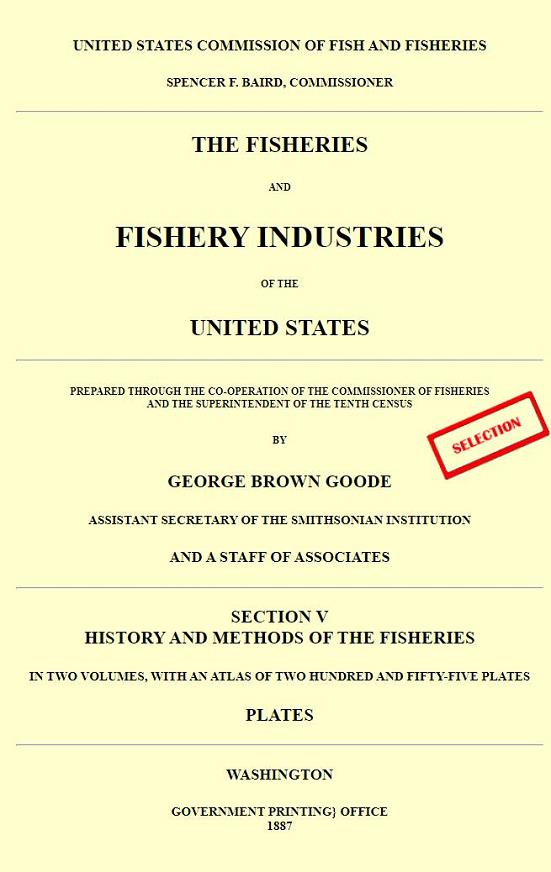 |
(Page references to Volumes I and II of test.)
. . . .THE WHALE FISHERY.
| |||||||||||||||||||||||||||||||||||||||||||||||||||||||||||||||||||||||||||||||||||||||||||||||||||||||||||||||||||||||||||||||||||||||||||||||||||||||||||||||||||||||||||||||||||||||
THE BLACKFISH AND PORPOISE FISHERY.
. . . . |
|
Plate 183
|
|
Plate 184
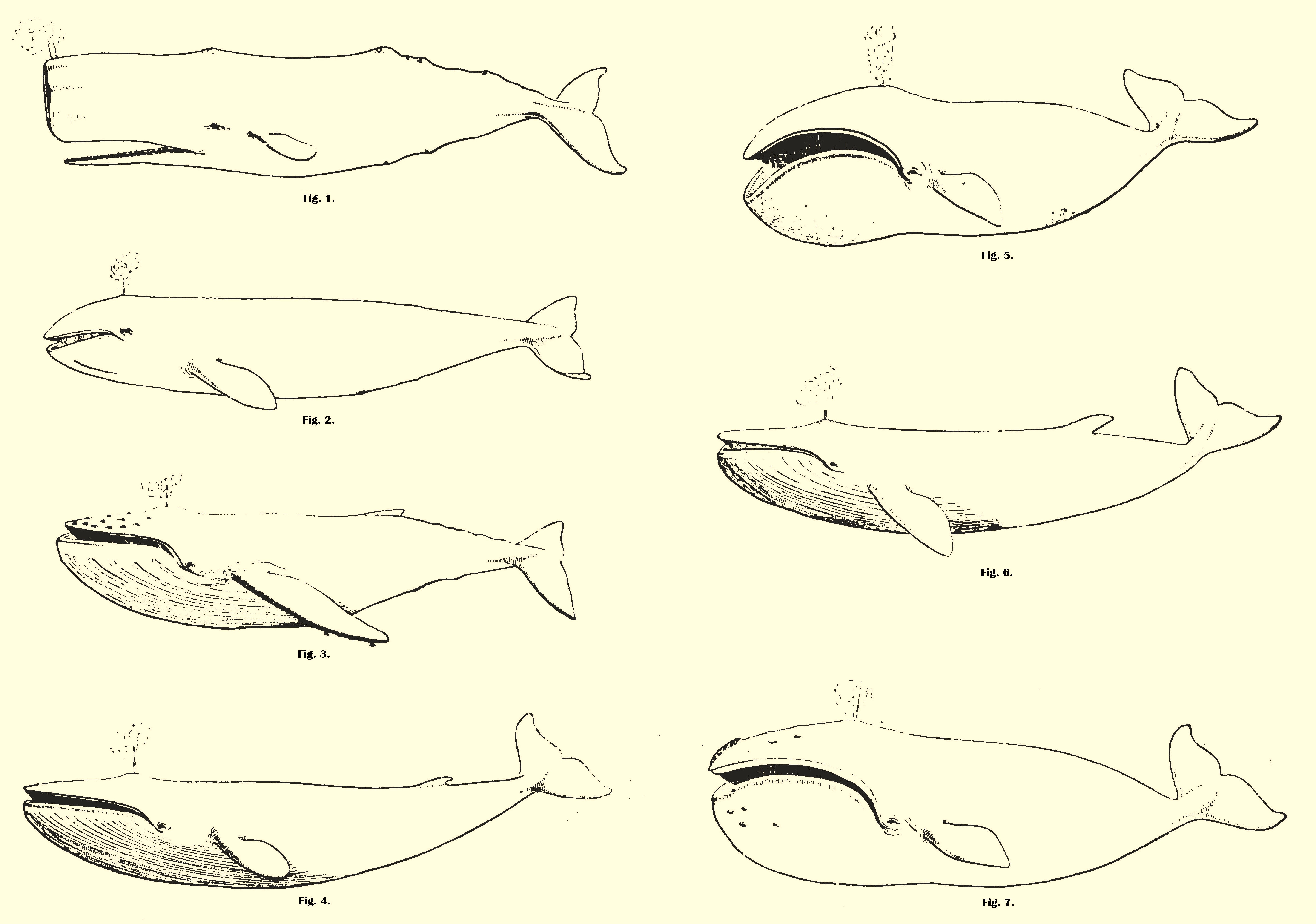
[Click on image to view in higher resolution.]
THE WHALE FISHERY.Outlines of Whales in the Fishery Outlines from Scammon's Marine Mammalia. [Click on image to view in higher resolution.] [Go to an expanded & annotated view of this image.]
|
|
Plate 185
|
|
Plate 186
|
|
Plate 187
|
|
Plate 188-1
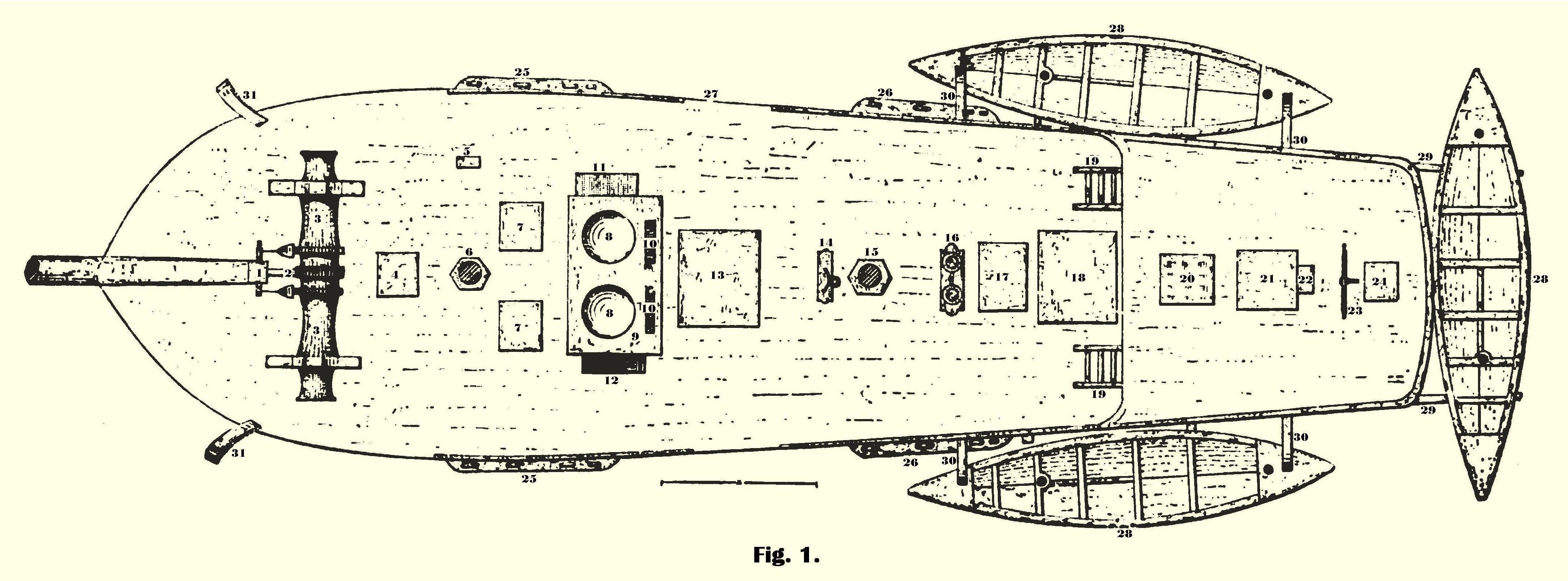
[Click on image to view in higher resolution.]
THE WHALE FISHERY.Deck plan of the whaling schooner Amelia, of New Bedford, Mass. 95.44 tons. (Sect. v, vol. ii, p. 234.) Drawing hy C. S. Raleigh. [Go to an expanded view of this image with labels.] Fig. 1. Deck plan. –
|
|
Plate 188-2

[Click on image to view in higher resolution.]
THE WHALE FISHERY.Side and interior plan of the whaling schooner Amelia, of New Bedford, Mass. 95.44 tons. (Sect. v, vol. ii, p. 234.) Drawing hy C. S. Raleigh. [Go to an expanded view of this image with labels.] Fig. 2. Side and interior plan. –
|
|
Plate 189-1
 [Click on image to view in higher resolution.] Fig. 1. THE WHALE FISHERY. Deck Plan of whaling bark Alice Knowles, of New Bedford, Mass. 302.78 Tons. (Sect. v, vol. ii, p.234.) Drawing by C. S. Raleigh. [Go to an expanded view of this image with labels.] Fig. 1. Deck plan.
|
|
Plate 189-2
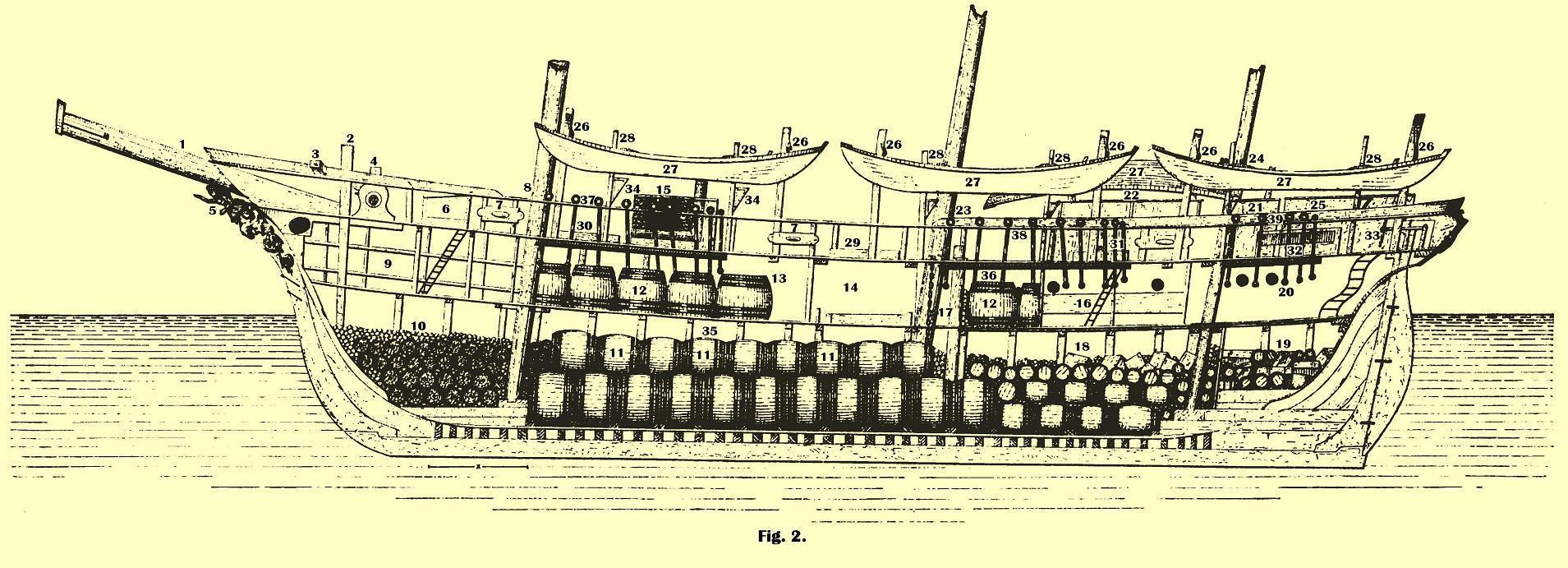 [Click on image to view in higher resolution.]
[Click on image to view in higher resolution.]Fig. 2. THE WHALE FISHERY. Sectional plan (side and interior) of whaling bark Alice Knowles, of New Bedford, Mass. 302.78 Tons. (Sect. v, vol. ii, p.234.) Drawing by C. S. Raleigh. [Go to an expanded view of this image with labels.] (Scale one-sixteenth inch to foot.)
|
|
Plate 190
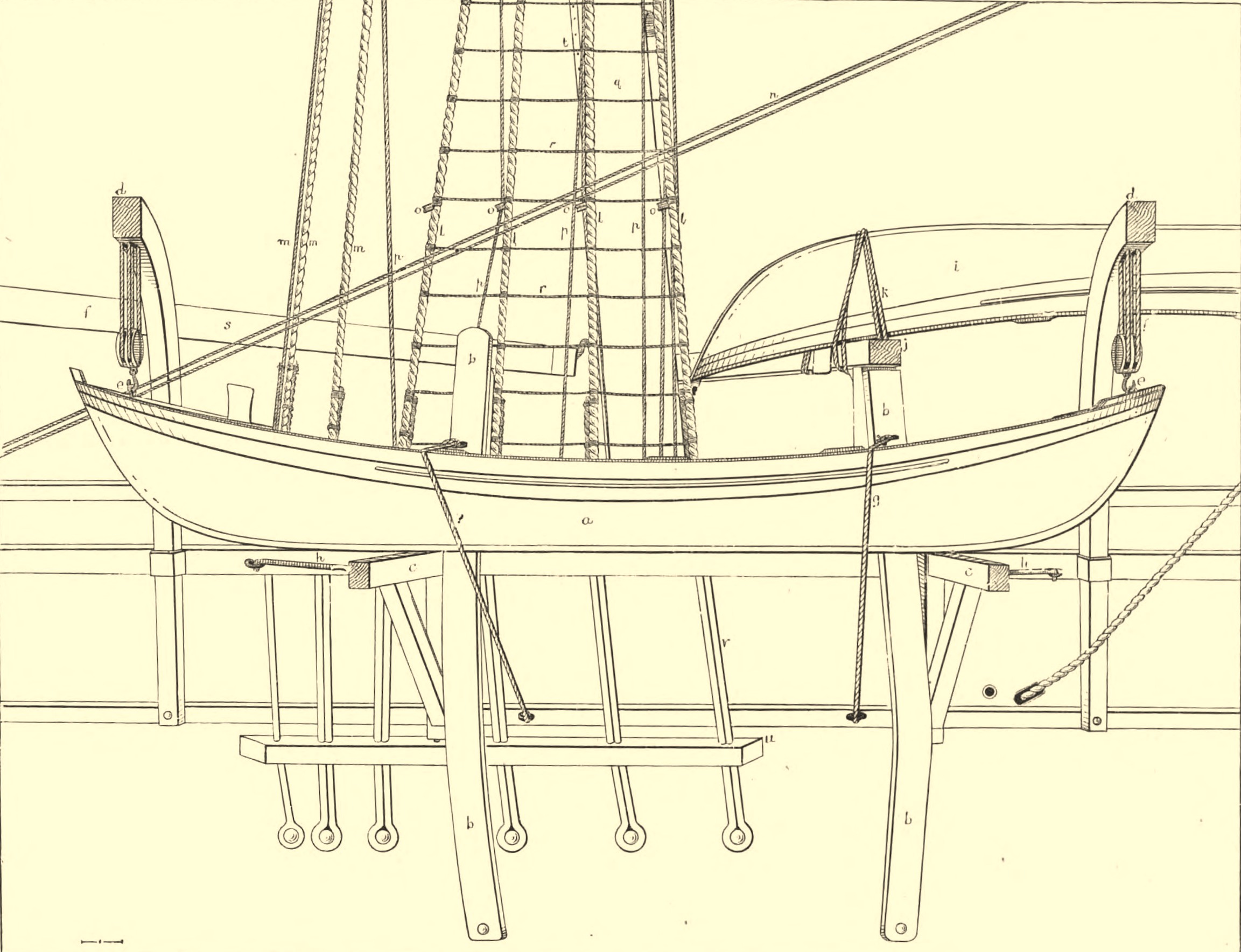
[Click on image to view in higher resolution.]
THE WHALE FISHERY.Manner of transporting whale-boats on the vessels. (Sect. v, vol. ii, pp. 243, 244.) [Go to an expanded view of this image with labels.] STARBOARD QUARTER OF A WHALE SHIP SHOWING THE MANNER OF TRANSPORTING THE CAPTAIN'S BOAT AND THE SPARE BOATS.
|
|
Plate 191

[Click on image to view in higher resolution.]
THE WHALE FISHERY.Deck view of whale-boat ready for the chase. (Sect. v, vol. ii, pp.241, 258.) Drawing by C. S. Raleigh. [Go to an expanded view of this image with labels.] [Scale 3/8 inch to foot. Parts of boats (designated by figures and, utensils by letters.]
|
|
Plate 192

[Click on image to view in higher resolution.]
THE WHALE FISHERY.Side and interior plan of whale-boat. Length, 30 feet. (Sect. v, vol. ii, pp.241, 258.) Drawing by C. S. Raleigh. [Go to an expanded view of this image with labels.]
Note. – Oars omitted on this draft, full length being given on front and interior plan. |
|
Plate 193
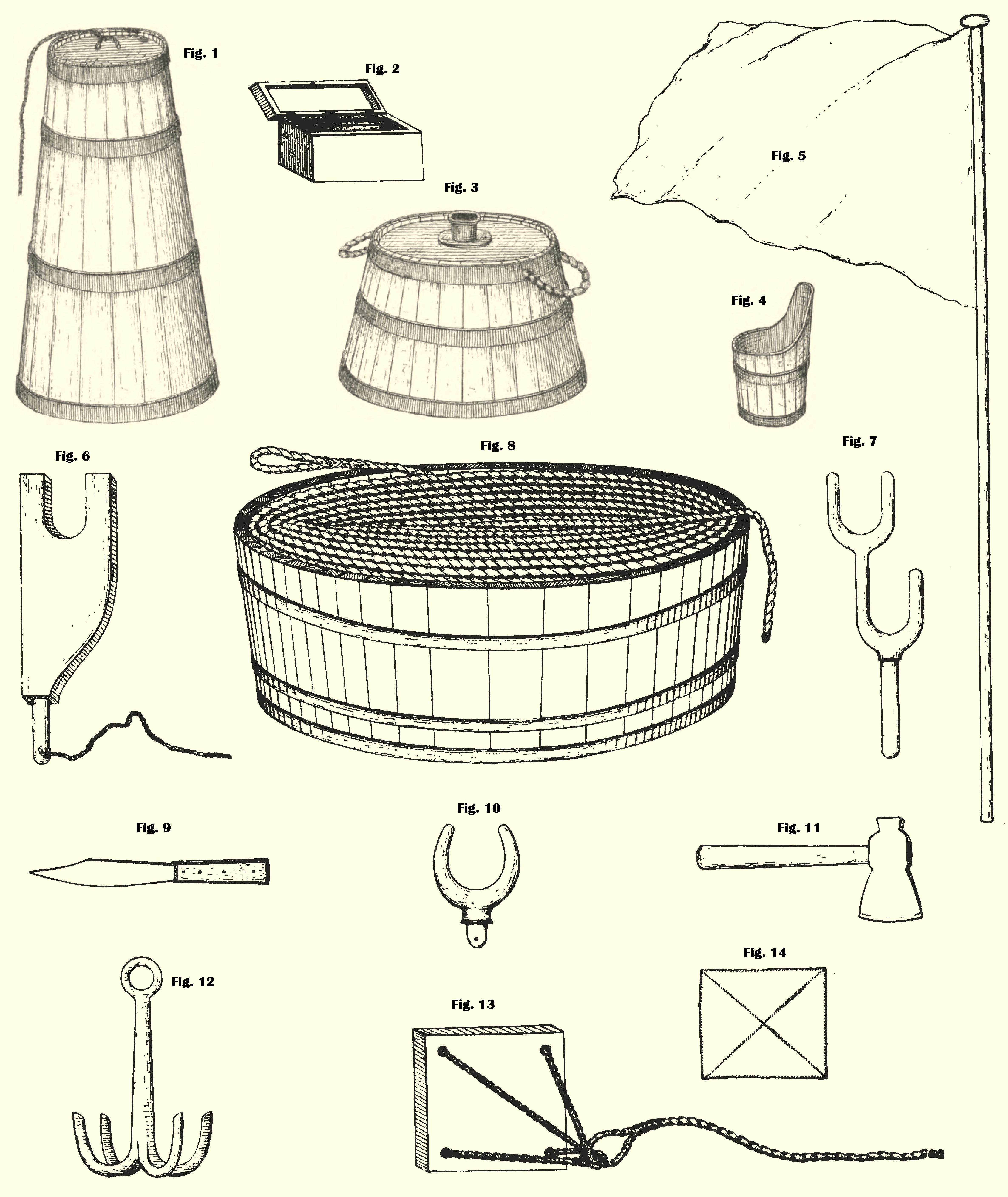
[Click on image to view in higher resolution.]
THE WHALE FISHERY.Articles of whale-boat gear. (Sect. v, vol. ii, pp.240,252.) [Go to an expanded view of this image with labels.]
|
|
Plate 194
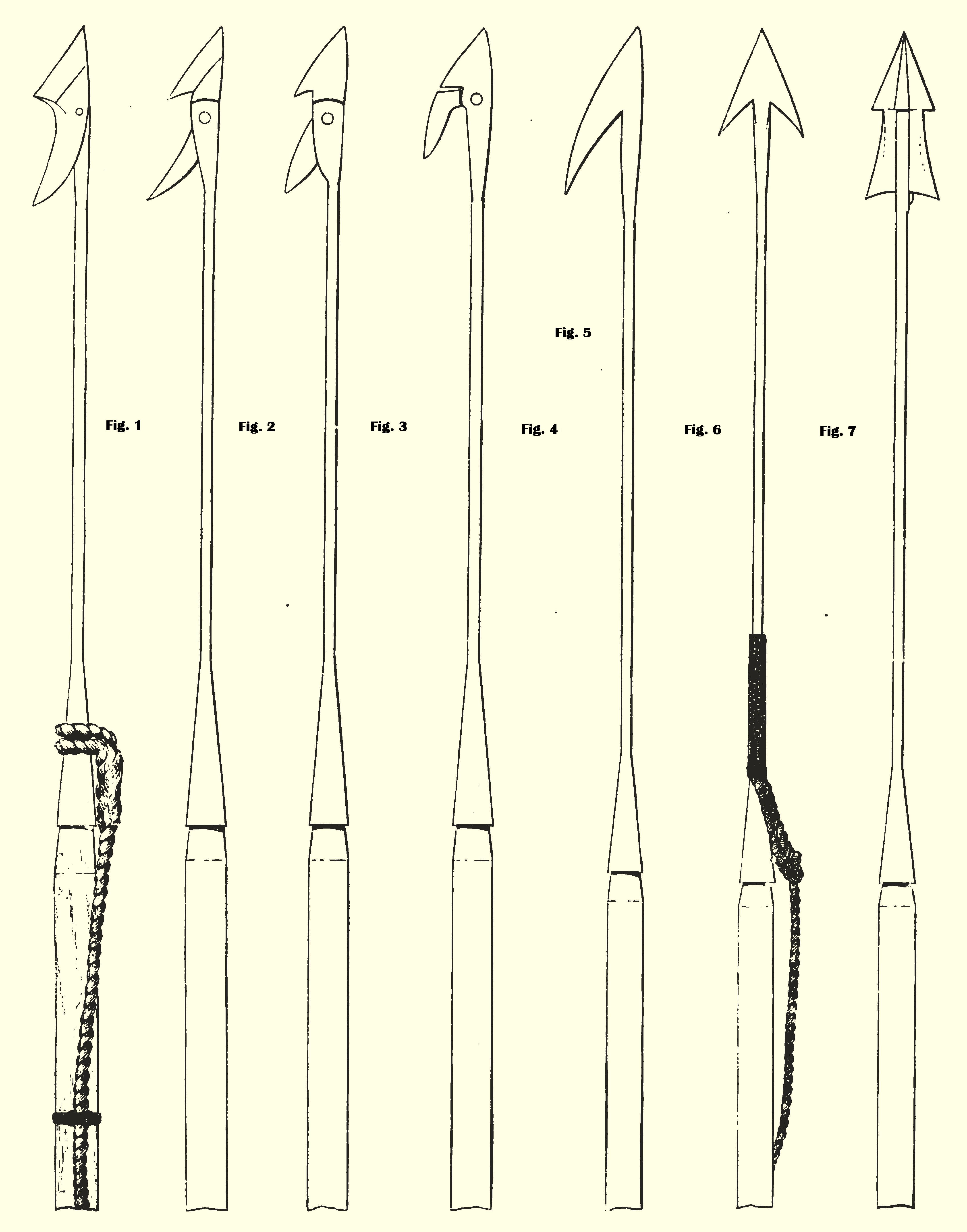
[Click on image to view in higher resolution.]
THE WHALE FISHERY.Harpoons. (Sect. v, vol. ii, p.250.) [Go to an expanded view of this image with labels.]
|
|
Plate 196

[Click on image to view in higher resolution.]
THE WHALE FISHERY.English and American swivel guns. (Sect. v, vol. ii, p.252.) WHALING GUNS.
|
|
Plate 197
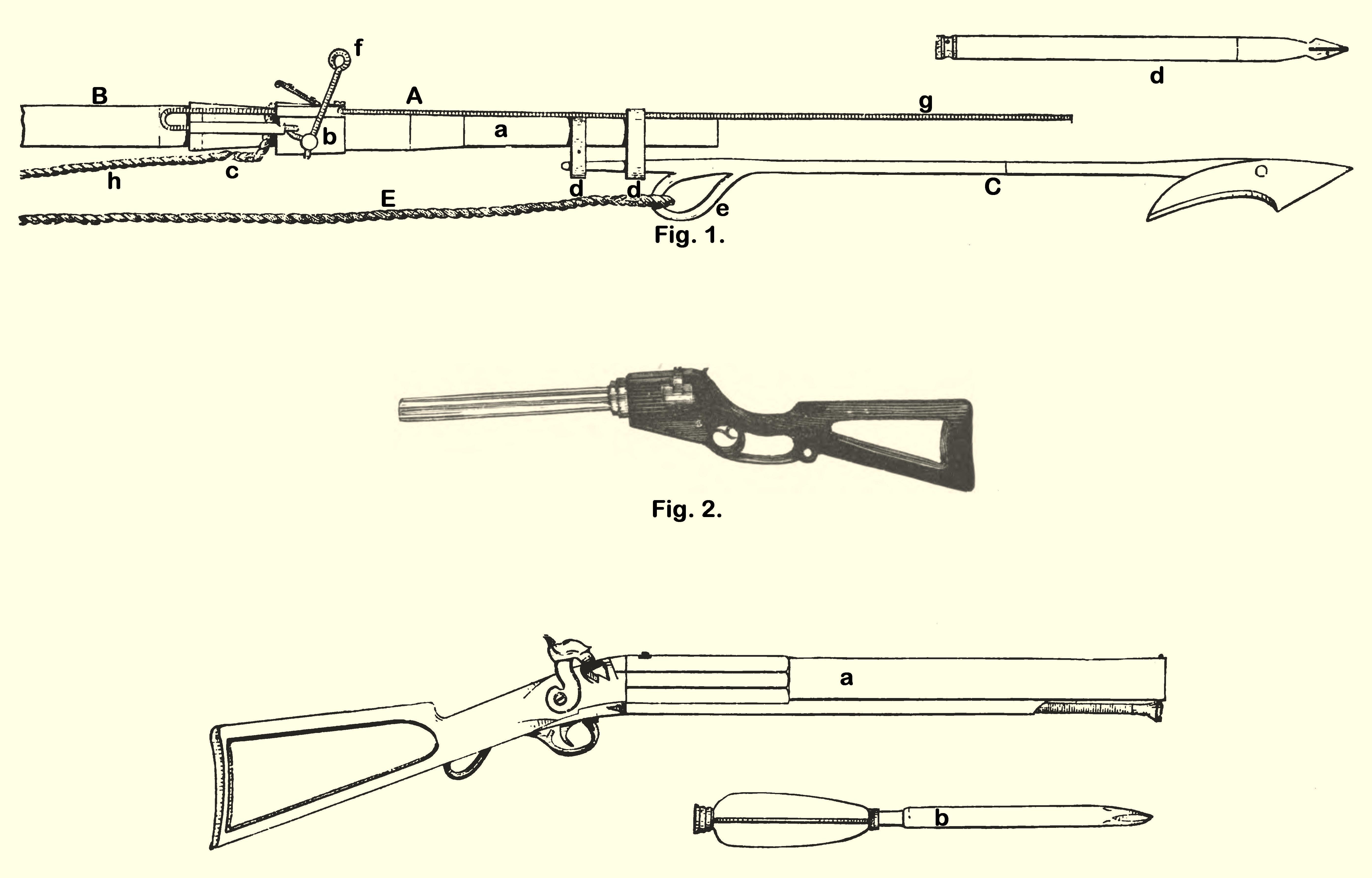
[Click on image to view in higher resolution.]
THE WHALE FISHERY.Darting and Shoulder Guns. (Sect. v, vol. ii, pp. 253, 254.)
Fig. 1. Pierce and Cunningham dartiug gun and bomb-lance. A combined harpoon and lance used largely by Arctic whalemen. Improved forms of darting guns have since been invented aud will be illustrated in the Section on Apparatus of The Fisheries. Fig. 2. Cunningham and Cogan gun; length, 33 inches; weight, 27 pounds. Used by Arctic steam whalers with bomb lance. Fig. 3. Brand muzzle-loading whaling-gun (a) and bomb-lance (b). |
|
Plate 198

[Click on image to view in higher resolution.]
THE WHALE FISHERY.Pierce and Egger's breech-loading bomb-gun and Pierce bomb-lance. (Sect. v, vol. ii, p. 253.) BOMB LANCE AND BREECH-LOADING WHALING-GUN.
|
|
Plate 199

[Click on image to view in higher resolution.]
THE WHALE FISHERY.Whaling rocket. (Sect. v, vol. ii, p.254.)
|
|
Plate 200
|
|
Plate 201
|
|
Plate 202
|
|
Plate 203
|
|
Plate 204
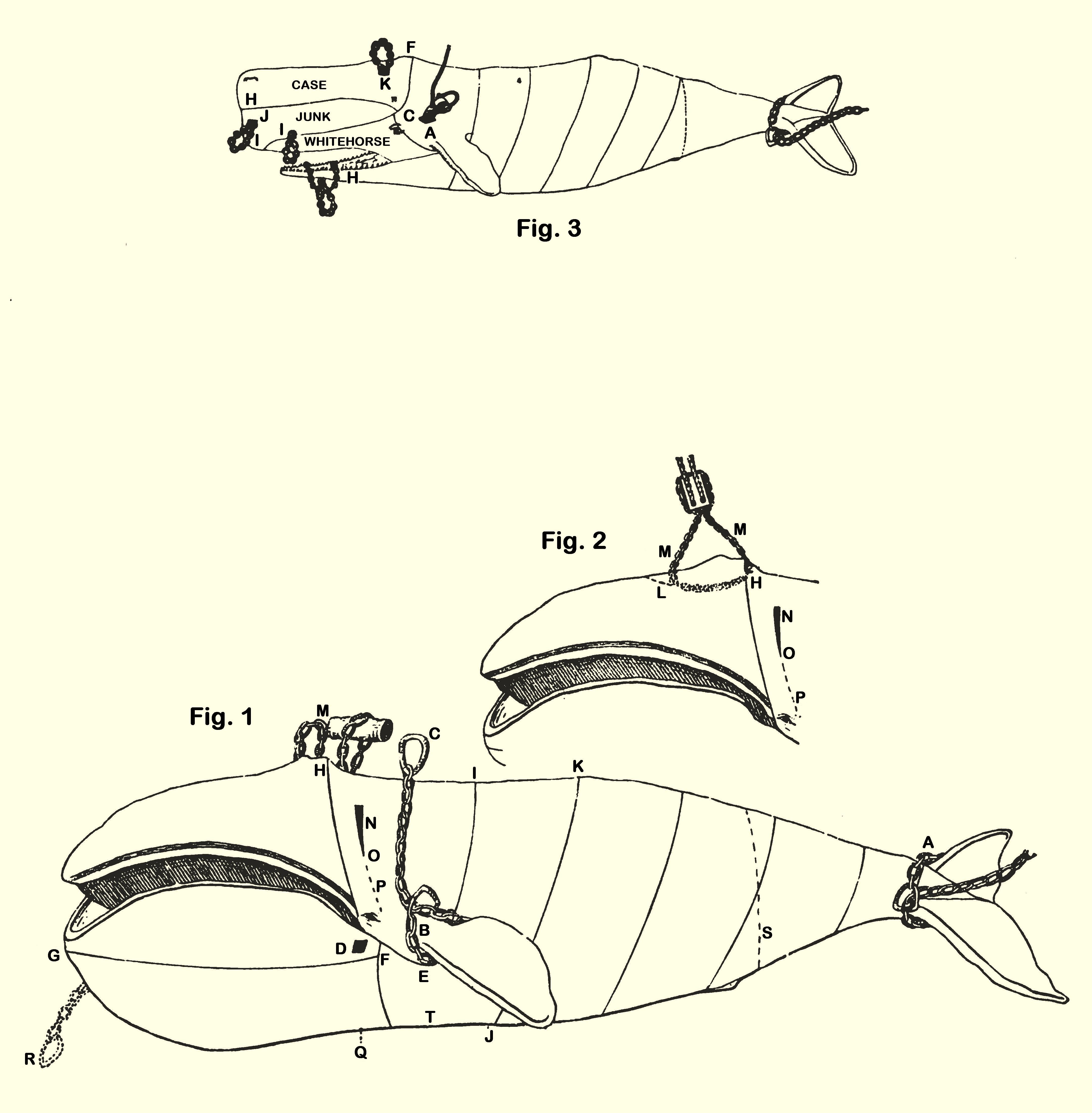
[Click on image to view in higher resolution.]
THE WHALE FISHERY.Diagram of bowhead and sperm whales, showing methods of cutting in. (Sect. v, vol. ii, pp. 277-286.) Drawings by Capt. C. M. Scammon and Capt. W. M. Barnes. CUTTING IN THE BOWHEAD AND SPERM WHALE.Figs. 1,2. Diagram of bowhead whale.
Fig. 3. Diagram of sperm whale showing method of cutting in. (Further description will be found in the chapter on oil rendering in the Section on Preparation of Fishery Products.) |
|
Plate 205
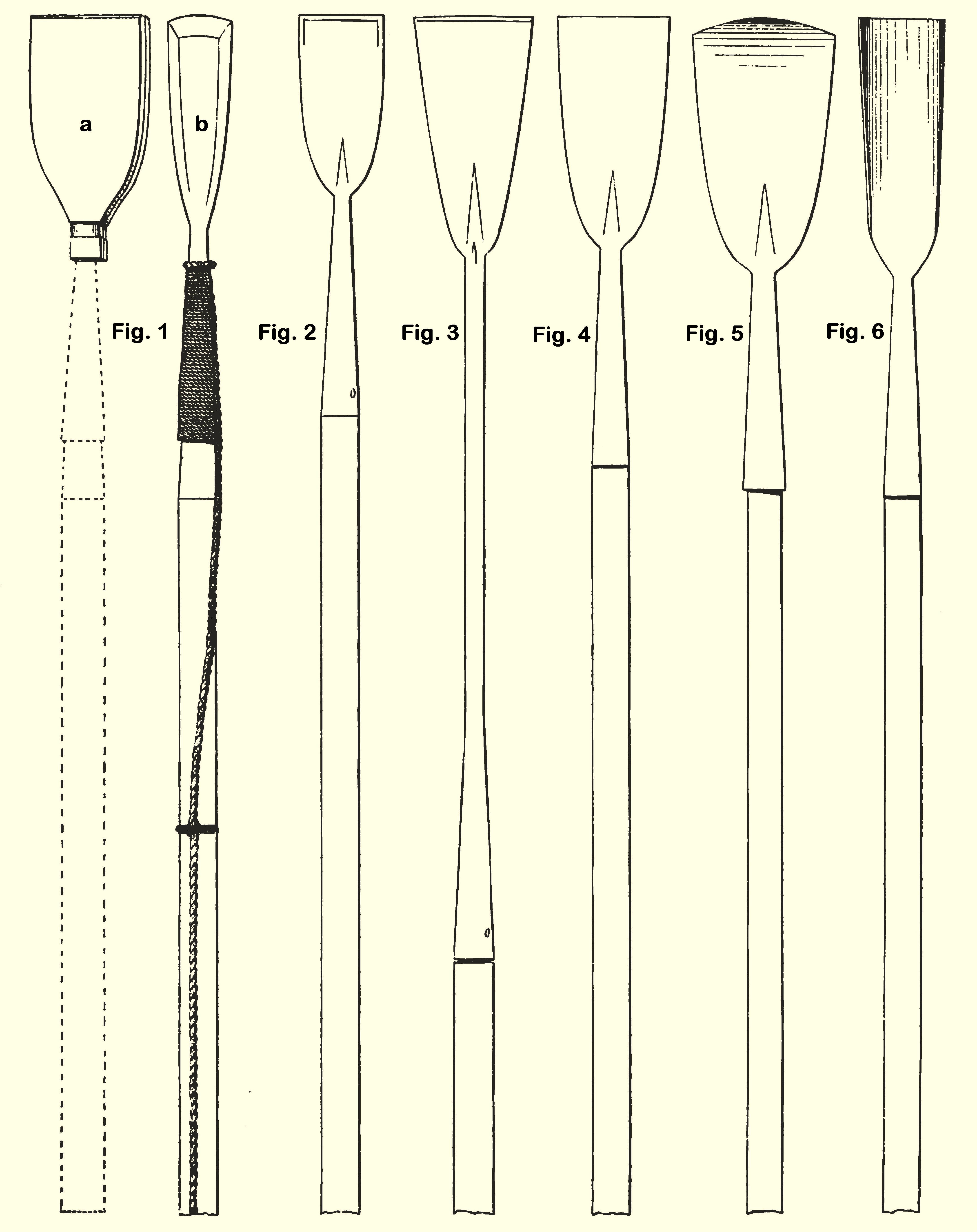
[Click on image to view in higher resolution.]
THE WHALE FISHERY.Boat-spade and cutting-spades. (Sect. v, vol. ii, pp. 264, 277, 281.) [Go to an expanded view of this image with labels.]
|
|
Plate 206
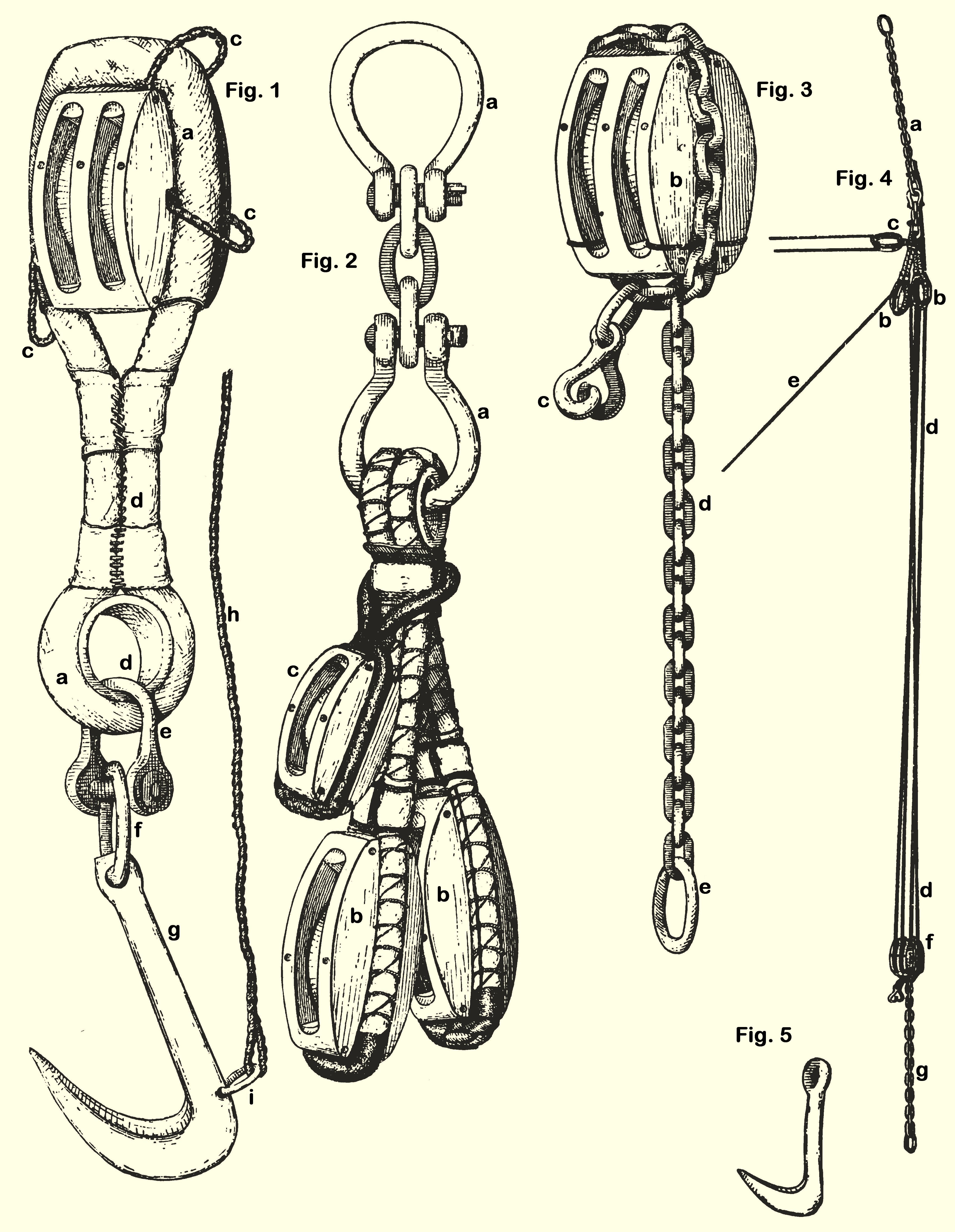
[Click on image to view in higher resolution.]
THE WHALE FISHERY.Cutting-tackle used in "cutting in" the whale. (Sect. v, vol. ii, pp. 277-281.) [Go to an expanded view of this image with labels.]
|
|
Plate 207
|
|
Plate 208
|
|
Plate 209

[Click on image to view in higher resolution.]
THE WHALE FISHERY.Tools and implements used in cutting-in whales. [Go to an expanded view of this image with labels.]
|
|
Plate 210
|
|
Plate 211
|
|
Plate 212
|
|
Plate 213
|
|
Source.
George Brown Goode.
This publication may be found at HathiTrust.
Last updated by Tom Tyler, Denver, CO, USA, Dec 24 2022
|
|